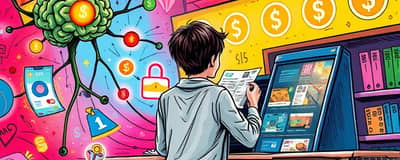When life throws an unexpected expense—whether a sudden car breakdown or an unplanned medical bill—you face a crucial choice. Do you tap into your savings or swipe your credit card? This decision can echo through your finances for months or even years.
By understanding both tools, their benefits and risks, you gain clarity to navigate financial storms and protect yourself from unwanted debt and stress.
Why Emergency Funds Are Preferred
An emergency fund is a dedicated savings pool set aside for crises such as job loss, urgent repairs, or unexpected medical costs. It offers immediate access to cash without creating debt, avoiding the burden of interest payments.
The standard guideline is to save three to six months of essential expenses—covering rent, utilities, groceries, and recurring medical needs. Research shows even a modest buffer of $500–$1,000 can stop you from reaching for credit cards in a pinch.
Beyond the numbers, having a tangible safety net brings an emotional lift. Knowing you can tackle a surprise expense without worry fosters confidence, reduces anxiety, and allows you to focus on solutions rather than scrambling for cash.
- No interest or debt obligations
- Peace of mind and flexibility
- Support during job loss or income reduction
- Freedom to choose the best repair or treatment options
To build your fund efficiently, open a separate account—ideally a high-yield savings vehicle. Set up automated transfers from each paycheck and treat your emergency fund as a non-negotiable monthly expense.
Risks of Relying on Credit Cards
Credit cards provide a line of revolving credit often accessible when emergencies hit and savings run dry. Yet, every swipe represents borrowed money that bears high interest. In 2024 the average credit card APR soared to 20.42%, amplifying costs rapidly.
Beyond financial strain, sustained credit use can trigger sleepless nights, damage to your credit score, and lingering stress. Carrying balances month to month leads to paying mostly interest—barely chipping away at the principal.
- High interest charges on unpaid balances
- Risk of debt accumulation and long-term financial strain
- Potential credit score decline from high utilization
- Temptation to charge non-emergencies
Consider this: financing a $1,500 repair at 20.42% APR with $100 monthly payments extends to 18 months and tacks on $246 in interest. Before you know it, a one-time repair becomes an 18-month commitment.
When a Credit Card Might Be Justified
There are moments when your emergency fund isn’t enough, or a large, immediate expense arises that surpasses your savings. In these cases, a credit card with a 0% introductory APR can serve as a short-term bridge.
Key considerations include having a clear repayment timeline and strategy and resisting the urge to add unrelated purchases. Only use credit if you can pay off the balance within the promotional period, avoiding retroactive interest charges.
How Much Should You Save?
A robust emergency fund covers three to six months of necessities, often totaling $9,000–$24,000 depending on your lifestyle. However, if that seems out of reach, start smaller: aim for $500–$1,000 as a foundational buffer.
Use a “pay yourself first” approach: schedule automatic deposits to your savings account before you budget for anything else. Celebrate each milestone—$100, $500, $1,000—to maintain momentum and build positive saving habits.
Balance is key. While stashing money in a low-yield account has opportunity costs, the security it provides generally outweighs potential investment gains during dire circumstances.
Current Trends and Statistics
In recent years, economic pressures have driven many to rely on credit. A 2025 Bankrate study found 33% of Americans carry more credit card debt than emergency savings. Millennials are particularly affected, with 42% reporting higher debt balances than cash reserves.
The average U.S. household credit card debt stands at $21,000. Simultaneously, 21% of adults would charge an unplanned $1,000 expense, risking substantial interest costs in the process.
These figures highlight the widening emergency funding gap, emphasizing the need to prioritize savings over credit whenever possible.
Practical Scenarios and Guidance
Faced with a sudden expense, run through this quick checklist:
- Assess your available emergency fund: if sufficient, use savings to avoid interest.
- If funds fall short, plan to use a credit card with the shortest possible payoff period.
- Explore alternatives: side income, low-interest personal loans, or community hardship programs.
Having a written decision process prevents impulsive choices under stress. Keep your fund dedicated to emergencies only, and track your credit utilization to maintain a healthy score.
Expert Advice and Conclusion
“Credit card debt is high-cost debt in any interest rate environment,” warns Greg McBride, chief financial analyst at Bankrate. Amanda Heitz, finance expert at Tulane University, recommends: “Try to save just $500–$1,000. What that will do is keep you from putting emergency expenses on that credit card.”
Your path to financial resilience rests on both saving diligently and using credit responsibly. Start by implementing small, automated contributions to your emergency fund. Track every dollar you spend, and make budgeting a regular habit.
When emergencies strike, your well-funded reserve offers tranquility and choice. When credit is your only option, use it cautiously and pay it off swiftly. Over time, cultivating these habits will transform uncertainty into empowered financial freedom and stability and lasting peace of mind.














